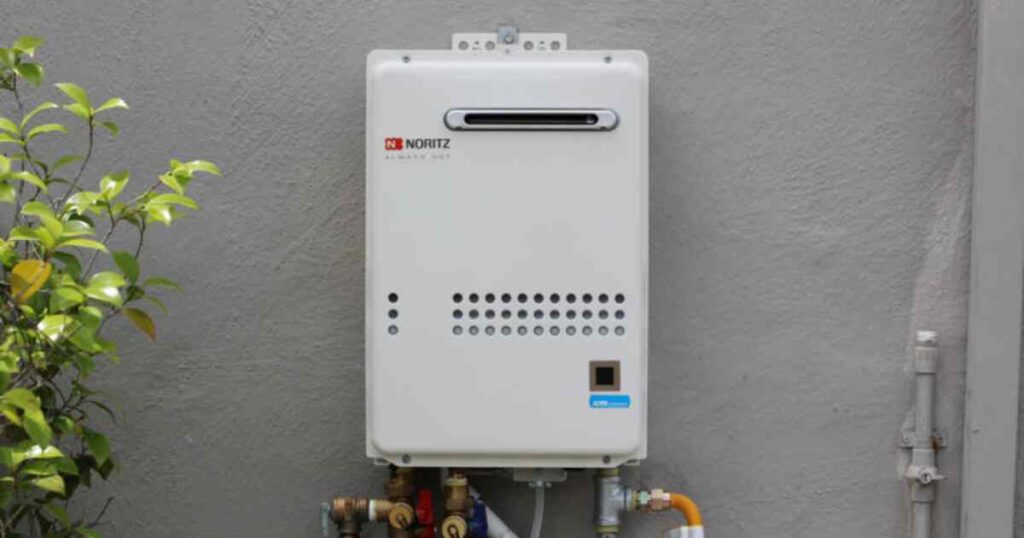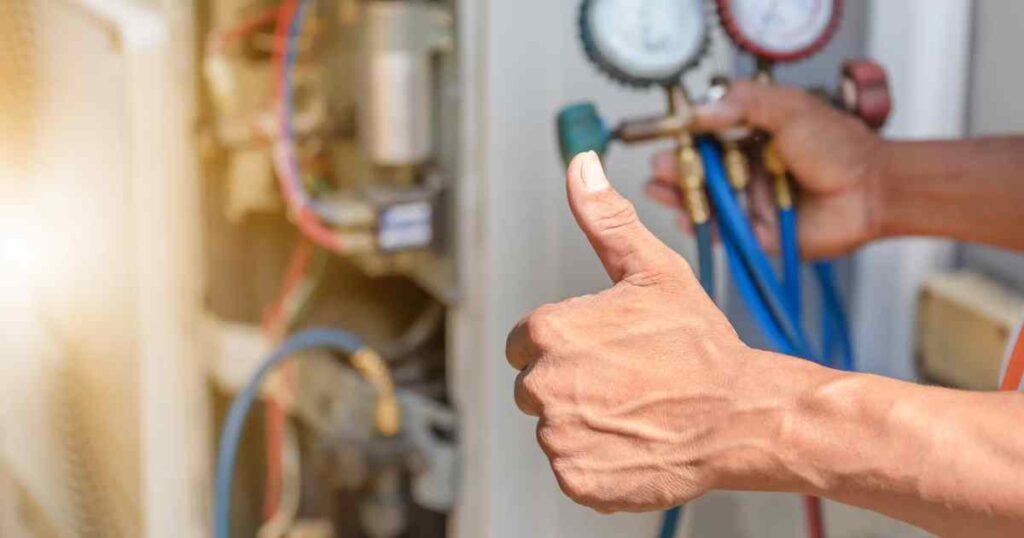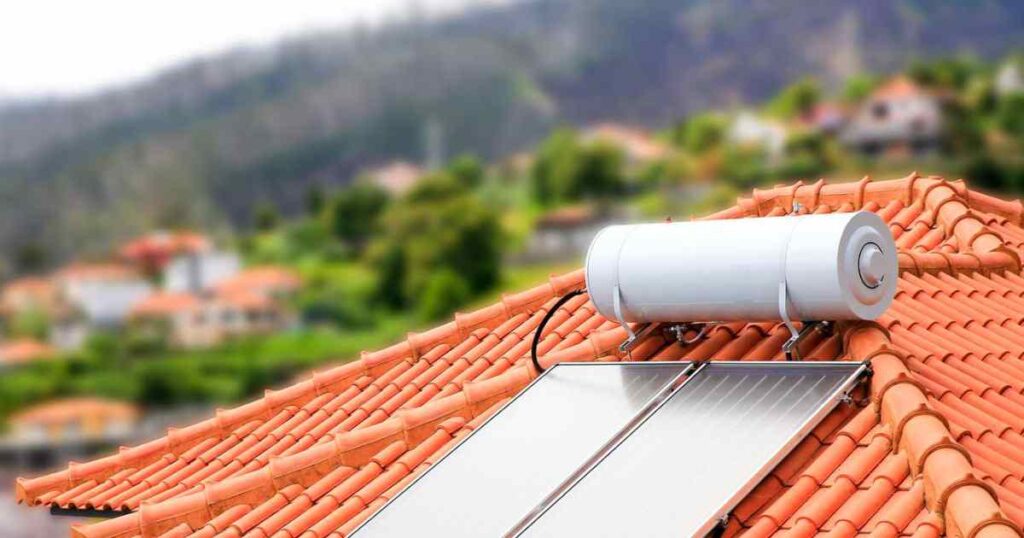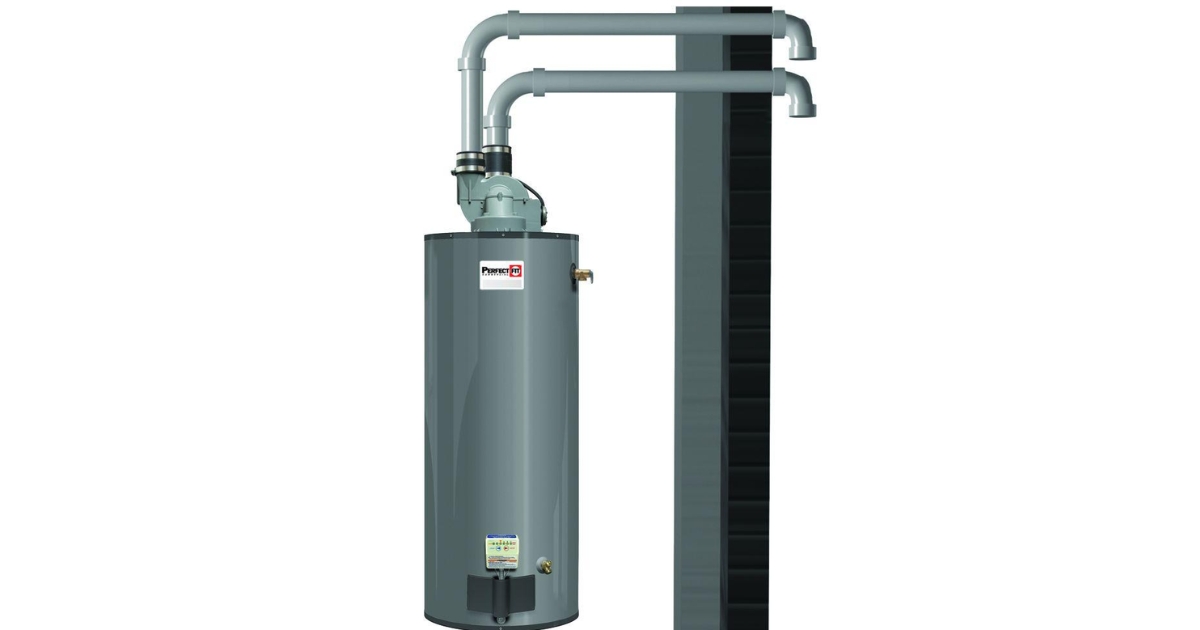A direct vent water heater is a type of water heater that uses a special venting system to remove combustion gases from the home. Unlike traditional water heaters, which vent exhaust gases up through a chimney, a direct vent water heater vents gases directly to the outside of the home through a short, sealed pipe.
Direct vent water heaters are safer and more efficient than traditional water heaters. They can be installed almost anywhere in your home and are often quieter. There are two main types of direct vent water heaters: natural draft and power vent. Natural draft water heaters rely on natural convection to draw air through the vent. Power vent water heaters use a powered fan to draw air through the vent.
Say goodbye to the traditional and hello to the modern! A direct vent water heater offers a sleek and efficient alternative, bringing hot water directly to your taps. Interested in learning more about this innovative technology? Keep reading to discover the secrets of a direct vent water heater and how it can revolutionize your home!
The Secrets of a Direct Vent Water Heater
Have you ever wondered how your hot water magically appears when you turn on the tap? The secret lies in a hidden hero called the direct vent water heater. This innovative technology is like a modern-day magician, providing endless hot water with amazing efficiency and safety.
Unlike a traditional water heater that puffs out exhaust through a chimney, the direct vent water heater has a special secret weapon: a coaxial vent. Imagine two pipes, one inside the other, working together like a team. The inner pipe carries away the exhaust gases, while the outer pipe brings in fresh air, keeping everything clean and safe. This clever system allows the direct vent water heater to be installed almost anywhere in your home, no chimney required!
So next time you enjoy a hot shower or a steaming cup of cocoa, remember the secret of the direct vent water heater working tirelessly behind the scenes. This little wonder is a testament to modern technology, bringing comfort and convenience to our lives in a safe and efficient way.
Breaking Free from Tradition

For years, traditional water heaters have been the go-to choice for homeowners. They’re bulky, take up valuable space, and rely on a chimney to vent exhaust gases. But what if there was a better way? Enter the direct vent water heater!
This modern marvel breaks free from the limitations of its predecessor. It’s sleek, compact, and doesn’t require a chimney. Instead, it vents exhaust gases directly to the outside through a short, sealed pipe. This means you can install it almost anywhere in your home, freeing up valuable space and giving you more design flexibility.
How Direct Vent Technology Saves You Money
Direct vent technology brings more than just convenience. Its unique design actually helps you save money on your energy bills. Here’s how:
- Enhanced Efficiency: Unlike traditional water heaters that lose heat through the chimney, direct vent models utilize a sealed system. This means almost all the energy produced is used to heat your water, reducing energy waste and lowering your monthly bills.
- Reduced Maintenance Costs: Direct vent systems are built with fewer components than traditional ones, making them easier to maintain. This means less money spent on professional cleaning and repairs.
Think of it like this: direct vent technology is like having a super-powered water heater that works smarter, not harder. It saves you energy, reduces waste, and ultimately, helps you keep more money in your pocket!
The Safety Benefits of Direct Vent Water Heaters
Direct vent water heaters offer a number of safety benefits over traditional water heaters. Since they vent combustion gases directly outside your home, they reduce the risk of carbon monoxide poisoning. This is a serious issue, as carbon monoxide is a colorless, odorless gas that can be fatal if inhaled.
Traditional water heaters can leak exhaust gases into your home if the vent pipe is damaged or blocked. This can also lead to carbon monoxide poisoning. Another safety benefit of direct vent water heaters is that they have sealed combustion chambers. This means that the flames inside the water heater are not exposed to the air in your home. This can help to prevent fires.
If you are considering a new water heater, be sure to weigh the safety benefits of a direct vent water heater against the cost. Although they are more expensive than traditional water heaters, they can provide peace of mind knowing that your family is safe from carbon monoxide poisoning.
Installing a Direct Vent Water Heater Anywhere in Your Home

Imagine having instant hot water wherever you need it, without the need for a bulky chimney taking up valuable space. That’s the magic of a direct vent water heater! Unlike traditional water heaters that vent exhaust gases through a chimney, direct vent models utilize a clever system. This system expels gases directly through a short, sealed pipe, allowing you to install the water heater virtually anywhere in your home.
No more limitations! Whether you have a basement, attic, or even a closet, a direct vent water heater can be easily installed. This flexibility opens up a world of possibilities for optimizing your home layout and freeing up valuable space. So, say goodbye to bulky chimneys and hello to hot water wherever you need it most!
Enjoy the Peace of a Direct Vent Water Heater
Have you ever been interrupted by the loud roar of your old water heater? Maybe it’s time to consider a quiet and peaceful alternative: a direct vent gas water heater!
Unlike traditional water heaters that use a noisy fan to vent exhaust gases, direct vent models vent directly through a short, sealed pipe. This means you can enjoy the sweet sounds of silence while still having plenty of hot water for showers, baths, and dishes.
So, why should you choose a direct vent water heater? Here are just a few reasons:
- Quieter operation: Direct vent water heaters are much quieter than traditional models, making them ideal for homes with young children or light sleepers.
- Increased safety: Direct vent water heaters vent harmful gases directly to the outside, reducing the risk of carbon monoxide poisoning.
- Improved efficiency: Direct vent water heaters are more efficient than traditional models, which can save you money on your energy bills.
- Greater flexibility: Direct vent water heaters can be installed almost anywhere in your home, regardless of your existing venting system.
Overall, direct vent water heaters offer a number of benefits that can make your life more peaceful and enjoyable. If you’re looking for a quiet, efficient, and safe way to heat your water, a direct vent water heater is a great option.
Natural Draft vs. Power Vent Direct Vent Water Heaters
Both natural draft and power vent direct vent water heaters offer efficient and safe hot water solutions, but they have some key differences. Here’s a breakdown to help you choose the best option for your needs:
Natural Draft:
- How it works: This type relies on natural convection to draw air through the vent. Hot air rises, pulling in fresh air and pushing out exhaust.
- Pros:
- Cost-effective: They are typically cheaper than power vent models.
- Simple installation: No electricity required, making installation easier and less expensive.
- Cons:
- Less efficient: Requires a longer vent pipe, leading to slightly lower efficiency.
- Reliance on wind: Can be affected by windy conditions, causing drafts and potentially backdrafting.
Power Vent:
- How it works: Uses a powered fan to push exhaust gases out and draw fresh air in, regardless of weather conditions.
- Pros:
- Highly efficient: Can achieve higher efficiency than natural draft models.
- Greater flexibility: Offers more installation versatility, with shorter vent pipe requirements.
- Unaffected by weather: Ensures consistent performance regardless of wind or drafts.
- Cons:
- Higher cost: Requires additional components like the fan, making it more expensive than natural draft models.
- Electricity dependence: Needs a constant power source to operate.
Ultimately, the best choice depends on your budget, priorities, and specific installation requirements. If you seek a cost-effective option and have a straightforward installation scenario, a natural draft model might be sufficient. But if you prioritize efficiency, flexibility, and weather-resistant performance, a power vent model is worth considering.
The Future of Hot Water

Imagine a world where showering is guilt-free, and your hot water never runs out. That’s the future we’re heading towards with new advancements in water heating technology. One exciting development is the rise of renewable energy sources like solar and geothermal power.
These natural resources can be used to heat water directly, eliminating our reliance on fossil fuels. Imagine having solar panels on your roof heating your water, saving you money and reducing your carbon footprint. Another game-changer is the increased efficiency of water heaters.
New models use smart technology to learn your hot water usage patterns and adjust their operation accordingly. This means less wasted energy and more hot water when you need it most. The future of hot water is not just about technology; it’s about empowering individuals to make a difference.
With easy-to-use controls and smart features, you’ll be able to manage your hot water usage and contribute to a greener future. So, get ready for a hot new future! The days of clunky, inefficient water heaters are numbered, and a world of clean, sustainable hot water is just around the corner.
FAQ’s
What is the difference between a direct vent water heater vs standard vent?
The main difference between a direct vent water heater and a standard vent one is how they vent combustion gases.
Direct vent:
- Vents directly outside through a sealed pipe.
- No chimney needed.
Standard vent:
- Vents gases up through a chimney.
- Requires a chimney installation.
Both types have their own advantages and disadvantages, so the best choice for you will depend on your specific needs and preferences.
What is the difference between direct-vent and non direct-vent?
Direct-vent water heaters vent exhaust gases directly outside through a pipe, while non-direct-vent use a chimney and need room-air for combustion.
How to vent gas water heater in basement?
To vent a gas water heater in a basement, you can use either a natural draft vent that relies on convection or a power vent that uses a fan to draw exhaust gases outside. Both types require a short, sealed pipe to vent directly to the exterior of the home. Consult local codes and a licensed professional for proper installation.
What are the gas hot water heater venting requirements?
Gas hot water heater venting requirements depend on the type (natural draft or power vent) and must adhere to local building codes for safety and proper operation.
In general, vent pipes should be:
- Vertical or upward sloping to allow exhaust gases to rise.
- Made of metal or stainless steel for durability and heat resistance.
- Clear of combustible materials and properly terminated outside the home.
Is direct vent better?
Yes, direct vent water heaters are generally considered better than traditional water heaters for several reasons. They are:
Safer: They vent combustion gases directly outside, eliminating the risk of carbon monoxide poisoning.
More efficient: They waste less energy as they don’t draw room air to vent exhaust gases.
More flexible: They can be installed almost anywhere in your home, as they don’t require a traditional chimney.
Conclusion
As we’ve learned, direct vent water heaters are innovative machines that offer a safer, more efficient, and flexible alternative to traditional water heaters. They eliminate the need for bulky chimneys, vent exhaust gases directly outside, and come in both natural draft and power vent options. Whether you’re looking to save money, maximize space, or simply enjoy a more comfortable home environment, a direct vent water heater might be the perfect solution for you.
So, if you’re thinking about upgrading your home’s water heating system, consider the many benefits of a direct vent water heater. Embrace the future of hot water and enjoy the peace of mind knowing that you’re making a smart investment for your home and the planet.











